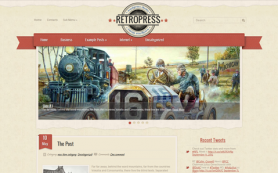Before we dive in, remember it’s always a good idea to start with the right tools. eCommerce platforms aren’t always a one size fits all solution but it does come down to finding the best platform for your eCommerce needs. In this comparison guide, Piesync takes us through two of the best platforms on the market for eCommerce businesses, Shopify and WooCommerce. Giving you all the information you need to make an informed decision.
Automation
Automation is already a huge part of running an eCommerce and it’s set to increase. Currently, automation is responsible for streamlining 1.1 billion workflows, including monitoring and updating stock levels and fulfillment notifications and managing customer preferences, saving businesses over 9 million hours of work. As the capabilities of automation grow, businesses can gain more time back to focussing on the bigger picture - growing their business. Mostly recently, brands are using automation to manage anti-fraud. This will prevent the loss of money caused by fraudulent orders and can save businesses a ton of money.
Personalised Shopping Experiences
Knowing what your customers want is the key to offering better customer shopping experiences. Personalisation is one the newest tactics that is helping businesses with customer retention. According to Instapage, 80% of shoppers will prefer a business that offers personalised shopping experiences over those that don’t. Personalisation is favoured by customers because it makes them feel valued by businesses that can demonstrate an understanding of what their customers want.
Voice Search
Voice search is already a popular method for conducting general searches and compiling shopping lists however this is set to bolster in the future. At the moment 55% of households are expected to own smart speaker devices by 2022, says 99 Firms in their recent voice search stat compilation. This will provide eCommerce businesses a larger platform of voice search users but it does mean that these businesses will have to optimise their websites for voice search if they want to utilise the platform.
Mobile is the Way
Majority of the population has mobile phones and we use them constantly to check emails, go on social media and to shop. Experts have forecasted that by 2021, 53.9% of all ecommerce sales will happen on mobile devices, eCommerce websites that aren’t mobile friendly or offer a poor mobile version will be left behind. On top of that big retailers like H&M and ASOS are utilising the app platform, allowing customers to shop and manage their orders and accounts in one centralised app giving customers a better shopping experience by making it easier for customers to shop and find their information.
Faster is Better
It’s no secret that the slower a website loads and runs, the less a customer is inclined to buy from you. In their customer survey, Search Engine Journal found that s said that site speed impacts their purchasing decisions. Most people turn to online shopping because it’s easier than going out to physical stores. A slow website impedes on this shopping experience and consistent latency will completely turn a customer off. If your website loads slowly, it’s time to fix it. Two things website owners can do is, ensure their media files aren’t too big and check their hosting package to ensure they have the right amount of bandwidth.
Sustainability is the Future
For many online stores, the future is green. More and more businesses are beginning to offer environmentally friendly alternatives to their current products and packaging. The changes which apply to product supply, manufacturing, packaging do mean that businesses are spending more but will see a better ROI as they begin to discover that consumers are willing to spend more money with businesses who are more eco-conscious. Online clothing retailer, ASOS now offers customers the ability to filter products by ‘sustainability’, showing them products that are either recycled material or sustainably sourced. Letting your customers know that you are eco-conscious is now moving towards allowing your customers to actively choose to shop with the environment in mind. This is a move that more businesses will adopt in the future as the demands for retailers to become more environmentally sustainable increases.
Better, Stronger Content
Selling is no longer about showing customers products and telling them to buy them. Content is one the strongest selling tools a business might have in their arsenal. Blogs, images, videos are the best forms of content that businesses can create and they’re easy to implement. Content can be used to convey information about a product or your business, you can use them to enhance the products you sell. For example, if you sell craft products you might produce a series of how-to tutorials to showcase how customers can use your products to get creative. If you want to go a step further, brands are now using shoppable videos to sell their products, this could be a video of a fashion runway or a simple how-to video that includes the products used in the tutorial. Check out these great examples of shoppable videos by Spott for some shoppable video inspiration.
Influencer Shopping
Influencers have changed the way brands use social media to market their products and the number of Instagram influencer content is increasing year-on-year. Replacing the traditional celebrity product advertising, influencers are more accessible to brands and more relatable and trustworthy to consumers making them a popular alternative. Of course, the bigger following an influencer has, the more expensive their services are but smaller brands shouldn’t be turned off as inspiring influencers are also on the lookout for work that will enable them to boost their platform. Influencer marketing is set to increase in the coming years so eCommerce brands looking for new ways to boost their social media marketing efforts should look to influencer marketing as a worthy investment.
Artificial Intelligence
According to Becoming Human there will be an increase in AI use within eCommerce businesses in the coming years. Artificial intelligence is already integrated into many online retailer platforms, especially within larger companies with the most common being chatbots. Until recently, chatbots have only had the capability to respond to simple queries with predefined responses. However chatbots are now being programmed to be able to learn human language in order to handle complex requests and respond to customers in a more human-like manner. The future of AI within online stores presents multiple opportunities that, like automation, can give businesses time back to work on other areas of their business.
 Members Area
Members Area




